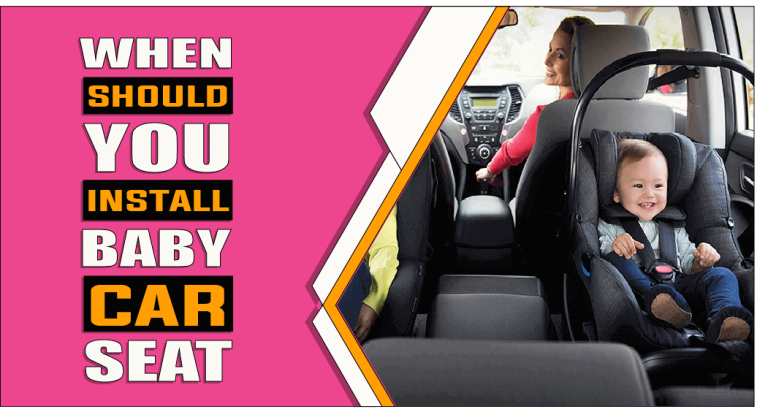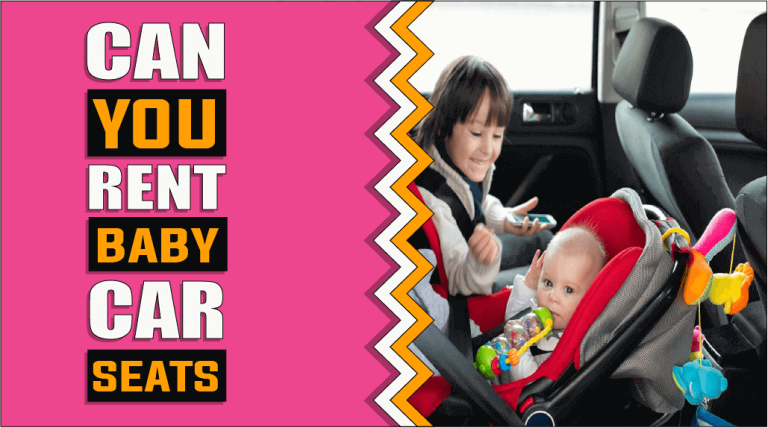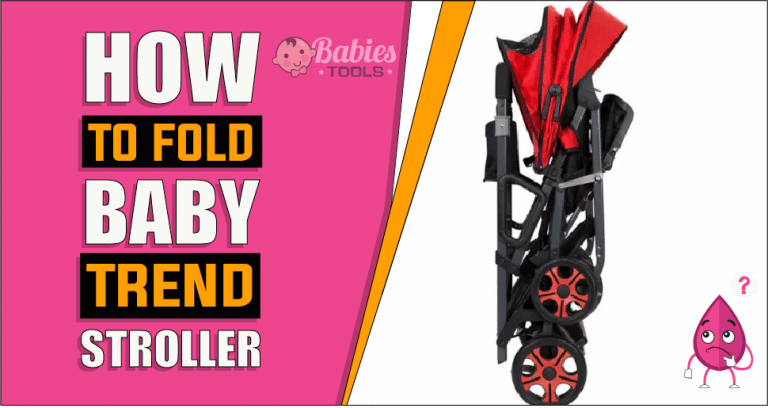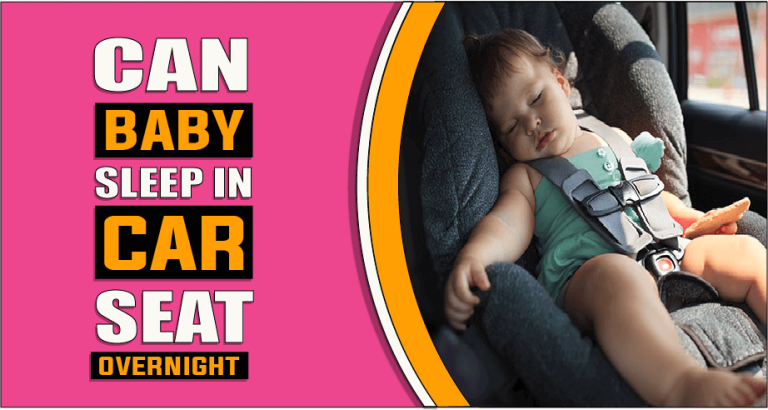How Long Can Baby Sleep In Car Seat – The Truth Reveals
Are you a new parent constantly worrying about your baby when asleep in the car? While it may be tempting to let your little one sleep for a few extra minutes during your travels, safety should always come first for babies riding in car seats. But how long can baby sleep in car seat? As mothers who have been driving with our children for years, we understand this question’s importance! So today, we want to shed some light on this subject by discussing what experts suggest and answering all the questions about how long a baby can sleep in their car seat. Read along carefully, so you don’t leave room for errors while keeping your beloved ones safe while sleeping peacefully throughout your journey!
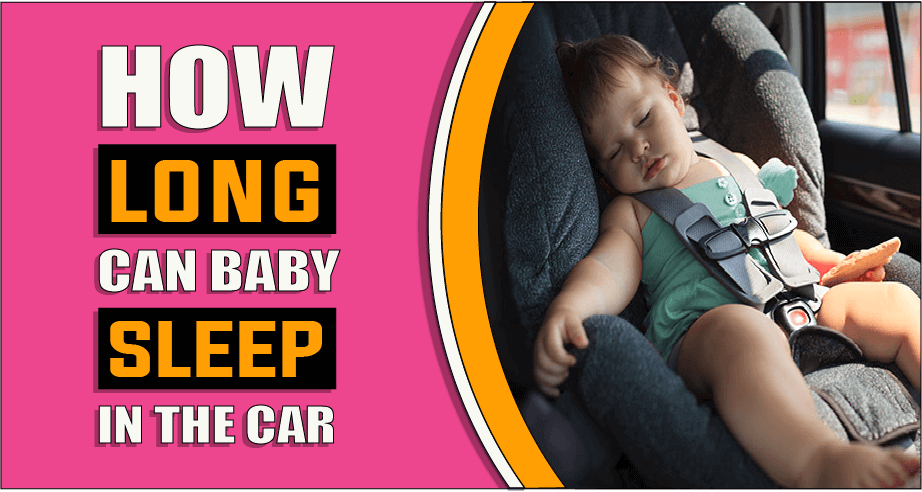
Let’s explore how long can baby sleep in car seat
Babies can sleep safely in car seats if installed correctly and used as directed. The American Academy of Pediatrics (AAP) recommends that infants should never be left unattended or unsupervised in a car seat for any period, including when sleeping.
However, research shows babies may fall asleep more efficiently in a car seat than in other places, such as a crib or stroller. The womb-like environment of the car seat helps to soothe babies and put them at ease.
As for how long a baby can safely sleep in their car seat, this depends on your child’s age and weight. The AAP recommends that newborns should not be in a car seat for more than two hours at a time. Breaking up long trips with stops to get out and move around is best.
For children 1-4 months old, the AAP recommends limiting their time in a car seat to no more than two hours at a time, including when sleeping or riding.
For children, 4-12 months old, the AAP recommends limiting their car seat sleep time to 1-2 hour intervals. It’s best to take frequent breaks along your journey so that your baby can get out and move around.
If you’re traveling with a baby over 12 months old, the AAP recommends limiting their car seat sleep time to no more than three hours at a time. However, taking frequent breaks along your journey is still best so your child can get out and move around.
Ultimately, regarding how long a baby can safely sleep in their car seat, it’s important to remember that the AAP recommends limiting your baby’s time in any car seat and taking frequent breaks along your journey. It will help ensure your child is comfortable and safe during their travels.
What are the health risks of a baby sleeping in a car seat?
Babies sleeping in car seats can put them at risk for health problems. Since car seats are designed to keep babies safe during a car ride, they do not offer the same level of comfort and support as a crib or bassinet. Without proper head, neck, and back support, babies may experience issues like flat head syndrome (plagiocephaly) and positional plagiocephaly, which can cause discomfort and affect head shape over time. Look at other potential health risks associated with babies sleeping in car seats.
1: Hypoxia-
Also known as oxygen deprivation, hypoxia can occur when babies sleep upright in a car seat for long periods. The head is positioned lower than the heart and does not receive adequate oxygen, leading to a lack of oxygen in the brain.
2: Poor posture –
Babies asleep for long periods in an upright position in a car seat can lead to poor posture and musculoskeletal issues such as neck strain and back pain. As the baby’s muscles and joints become more rigid, they may also develop discomfort and pain.
3: Compression –
Babies in car seats are also at risk of head and shoulder compression due to the seat’s straps pushing against them for long periods. It can lead to nerve damage, discomfort, and difficulty breathing or swallowing.
4: Head lags –
Babies sleeping in car seats for extended periods may also experience head lags when the head falls forward or to the side rather than staying upright. It can lead to neck strain and decreased blood supply due to poor circulation.
5: Gastroesophageal reflux (GER) –
Babies sleeping for long periods in a car seat may be more likely to experience GER when stomach acid backs up into the esophagus. It can cause heartburn, regurgitation, and poor feeding habits for babies.
Parents can ensure their babies are safe and comfortable when riding in the car by taking the time to understand the potential health risks of babies sleeping in car seats. Taking regular breaks, using headrests and shoulder pads to provide additional support, and always keeping an eye on your baby are some of the best ways to ensure a safe ride for all passengers. Additionally, if you’re traveling with your baby for more than two hours, finding a safe place to stop and allowing your baby to rest in a crib or bassinet is essential. It will help reduce the risk of any of the above health risks occurring.
What are some safe alternatives to a baby sleeping in a car seat?
Car seats are essential for car safety but should not be used as a sleeping space for babies due to the risk of airway obstruction. Parents can use several safe alternatives to provide their babies with a comfortable and secure sleep environment.
1: Bassinet –
A bassinet is explicitly designed for a baby’s sleep needs. It is typically smaller than a crib and connects easily to the bed or other furniture, making it a portable option for traveling. Bassinets should meet safety, stability, and comfort standards and come in various styles to fit any décor.
2: Crib –
A crib is a classic choice for a baby’s sleep environment. Cribs should meet standards set forth by the Consumer Product Safety Commission and be free of any hazards, including protruding hardware or large gaps between slats. Crib mattresses must also be firm to prevent suffocation risks.
3: Portable Bedside Sleeper –
These sleepers attach to the side of a parent’s bed so the baby can be close to the parents throughout the night. They are typically low enough for a parent to reach in easily and tend to their baby’s needs. Models should also meet the safety standards the Consumer Product Safety Commission sets.
4: Co-sleeper –
A co-sleeper is a separate sleep space that attaches directly to the bed and sits at the same level as the mattress. Many models feature breathable mesh sides, which allow for easy monitoring of babies during the night. It is vital to research all features of a co-sleeper before purchase.
5: Pack-n-Play –
A pack-n-play is a versatile sleep option for a play yard and a sleeping space. The mattress should fit snugly to the frame to reduce suffocation risks, and the entire unit should meet safety standards set forth by the Consumer Product Safety Commission.
These are just a few safe alternatives to baby sleeping in car seats. Parents must consider all options before deciding which sleep environment is best for their family. With so many great choices available, finding an option that meets both safety and comfort standards should be easy.
How to make sure your baby sleeps safely in a car seat?
Ensuring your baby sleeps safely in a car seat is paramount. Here are some tips for making sure that your little one has the safest sleep possible while traveling in the car:
1: Follow the manufacturer’s instructions –
Make sure to read and follow all instructions from the car seat manufacturer, including any instructions related to age and weight limits for the seat. Car seats have different features and restrictions based on their design, so it’s essential to ensure you use the correct car seat for your baby.
2: Positioning –
Secure the straps correctly, ensuring they are snug but not too tight. Use a mirror or check behind your shoulder regularly to ensure your baby is in the correct position. In addition, make sure that your baby’s head is not slumped forward and their chin is off their chest.
3: Temperature –
Make sure to dress your baby appropriately for the weather, as a car can quickly become too hot or cold if left parked in direct sunlight or on a cold evening. Additionally, use blankets sparingly to ensure your baby is always in the safest position.
4: Don’t Drive Distracted –
Pay attention to the road, and don’t get distracted while driving with your baby in a car seat. Additionally, keep all loose objects out of your child’s reach while the car is in motion.
Following these tips can help ensure your baby is always safe while traveling in a car seat. By taking the necessary precautions, you can provide your little one with a comfortable and secure environment for their nap times on the go.
Relevant Questions:
No, putting the baby in a car seat overnight is not recommended. The American Academy of Pediatrics (AAP) recommends placing babies to sleep on their back, on a firm flat surface in their crib or bassinet. Car seats are designed for short-term use and may not provide the same level of safety as appropriate sleeping space. Additionally, a baby’s airway may become restricted when seated for long periods. Talk to your child’s healthcare provider for more information about appropriate sleep environments for babies.
Generally speaking, it is recommended that infants and toddlers under two years of age should not be in a car seat for more than two hours at a time. However, if the ride is longer than two hours, it’s essential to take regular breaks where the child can move around or stretch out. The goal is to avoid putting the baby in an uncomfortable position for too long, which can strain the neck and back muscles. Whenever possible, it’s best to plan breaks at regular intervals throughout the car ride. Additionally, ensure the car seat is correctly buckled in, and all straps are snugly fastened before driving off!
Generally, no. Babies should not sleep in a car seat for extended periods as they risk suffocation or restricted blood flow due to their body positioning. It is best to transfer your baby out of the car seat and into a safe sleeping environment, such as a crib or bassinet. If you must let your baby sleep in the car seat after traveling, ensure that your baby has plenty of space around them and ensure they are in a semi-upright position. Additionally, never leave your baby unattended in the car seat.
Conclusion Paragraph
In conclusion, it’s essential to know “how long can baby sleep in car seat” and the potential health risks associated with it. Safety should always come first when caring for babies, so finding safe alternatives to protect the baby while in a car seat is critical. Always ensure you follow proper safety guidelines and check that all straps are securely in place before transport. Not only will this help ensure your child’s comfort but also their overall well-being. Following these simple precautions can assure peace of mind knowing your little one is safe and sound throughout the journey. So if you’ve been asking yourself, “how long can baby sleep in car seat?” the answer is not longer than two hours at a time – now let’s get out there and keep our kids safe!


